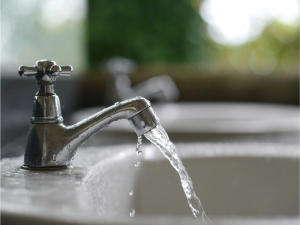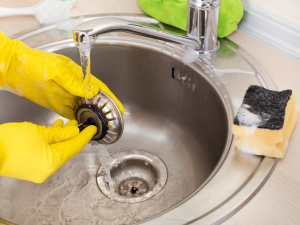It can be stressful when you suspect a water leak in your home and you can’t figure out where it’s coming from. However, there are certain things you can take to help you find the source.
The most common indicators of a water leak are an unusually high water bill or unusual readings on your water meter. Along with that, checking your lawn for green patches and inspecting your indoor plumbing will help you find a specific source if you notice high bills or meter readings.
In this article, we’ll go into more detail about how to find water leaks in your house. By the time you finish reading, you should have a good idea of what to look out for.
Pay Attention to Your Water Bill
It’s best to keep track of your monthly water bill because any noticeable increases can be attributed to a potential leak, especially if your water usage is normal. Even if the leak is as simple as a constant drip from your faucet, that leak has the potential to waste up to 10,000 gallons each year.
Keep an Eye on Your Water Meter
Your water meter can be found in one of two places: in your back or side yard up against your house, or near the street under a sewer maintenance hole cover. Checking your water meter will give you the most accurate answer to whether or not you have a leak, but you need to carefully follow directions to properly check the meter.
To check your water meter, here’s what you need to do:
- Turn off all faucets. Make sure nothing that requires water is running in your home during the process.
- Look at the meter and record what you see. Write down the numbers that are present on the meter and check a second time in one hour. If you notice the numbers have changed, you definitely have a leak.
- Find out if it’s inside or outside. To do this, shut off your home’s main water supply.
- Check the meter again. Write down what you see, wait one hour, then write down what you see again. If the numbers haven’t changed, the leak is inside. If they have, then the leak is outside your home.
If you notice the leak is outside of your home, you can look at your lawn to see if there are patches of grass that are greener than others. Those patches are likely where the leak originates.
Check Your Cabinets
Another way to check for leaks is to manually check your kitchen, bathroom, and laundry room cabinets where any pipes may reside. If you notice moisture in the cabinet wood, moisture dripping water from the pipes, or moisture around your pipes, it’s probable that there is an active leak there.
If you notice any of these signs, it’s important to shut off the valve that allows water to run through the area and call a professional plumber right away.
Inspect Your Water Heater
Another common area for leaks to occur is within your water heater. A water heater can leak for many reasons ranging from high temperatures to corrosion caused by rust. Not only will a leak in your water heater run up your water bill, but you may also notice issues with your water pressure and temperature regulation too.
Test Your Toilets
If you don’t notice any leak near your sink drains, laundry area, or water heater, it may be coming from your toilet.
Over time, the rubber stopper that keeps water from flowing into the bowl can get brittle. When this happens, it’s harder for the stopper to do its job, resulting in leaks into the toilet bowl. To test for an interior leak, you can add a few drops of food coloring to each toilet tank in your house. Allow the food coloring to sit for five minutes and check each bowl.
If you notice the dye has leaked into the bowl, there’s a leak in your toilet and you’ll need to replace the rubber stopper. This is a fairly easy DIY job, but it’s always best to consult a professional if you aren’t completely comfortable with the project.
Other Indicators
Although we’ve covered most of the common indicators of a water leak in your house, there are a few other indicators that show you just how to detect water leaks. If you notice discoloration in your walls, or that your ceiling is sagging, it’s likely due to a water leak.
Along with that, bubbling paint and bulging wallpaper are also indicators of an issue with a water pipe leak. If you notice musty smells or you hear consistent dripping, you should find the source of the leak right away.
Parting Thoughts: How to Detect Water Leaks in Your House
Leaks are a common problem among homeowners and knowing how to find water leaks is important in ensuring no lasting damage is caused. Regular checks of your water bill and meter are the first step in spotting a water leak and may even alert you to an issue you wouldn’t have noticed otherwise.
When you find a leak in your home, it’s important to solve the problem right away. Leaving an issue like this alone can result in costly damage to your home and its foundation. Also, your water bill won’t be too friendly to your wallet either.
By using the information provided in this article, you should have a solid understanding of how to find water leaks in your house.




